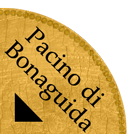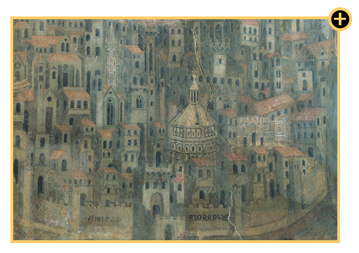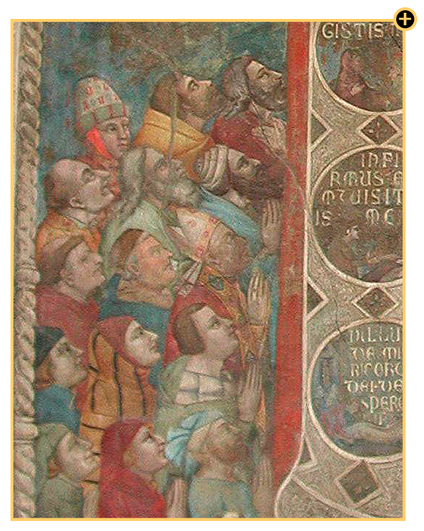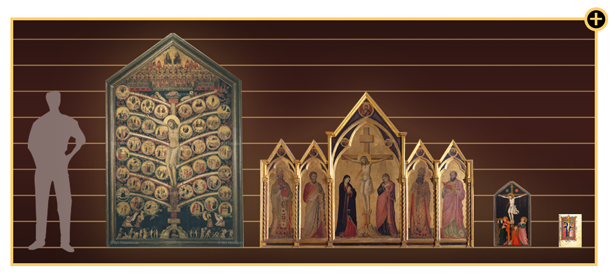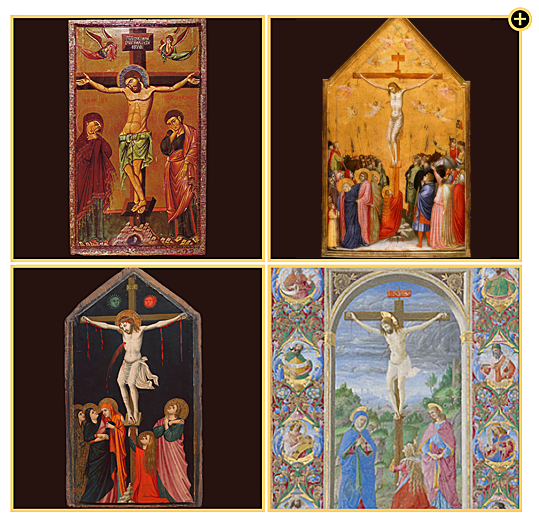
Vibrant Florence
A Time for Change



Expanding trade routes across northern Italy stimulated Florence's nascent industries: textile manufacturing, trade, and banking.
As the city's population surged around 1300, the Franciscans and the Dominicans—new religious orders with a preaching emphasis—built large churches on the outskirts of the city. To adorn them they commissioned art, which they considered an important means to convey their humanistic messages.


Vibrant Florence
A Flourishing City and its Churches


Florence's civic and cultural expansion meant a greater range of patrons for art, from merchants to friars, prominent families to lay religious organizations.
Artists such as Giotto di Bondone and Pacino di Bonaguida began to incorporate innovative pictorial approaches and narrative details to traditional subjects in order to meet their needs.


Pacino di Bonaguida
A Broad Range of Painting


Best known for his manuscript illumination, Florentine artist Pacino di Bonaguida was a versatile painter. He created objects on a variety of scales, including altarpieces and crucifixes, and worked in a range of media.
